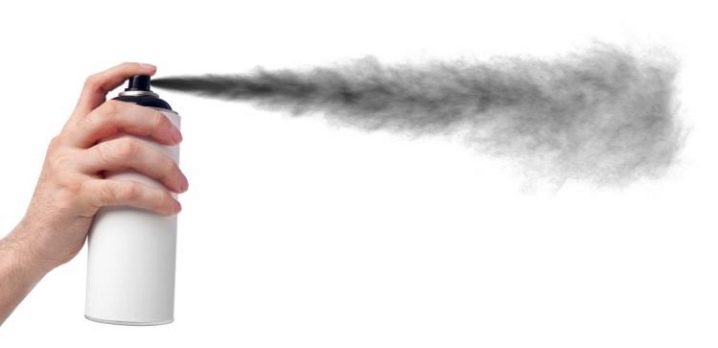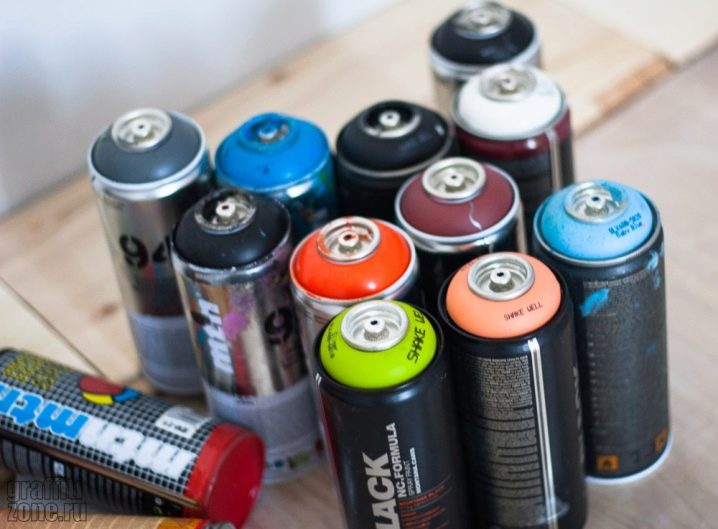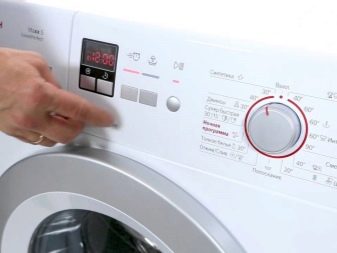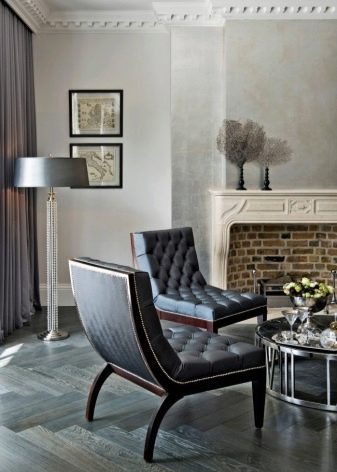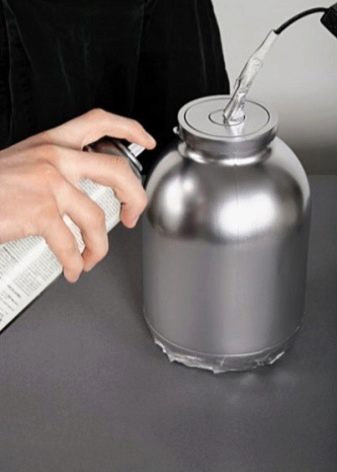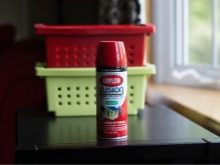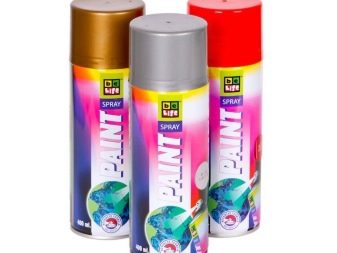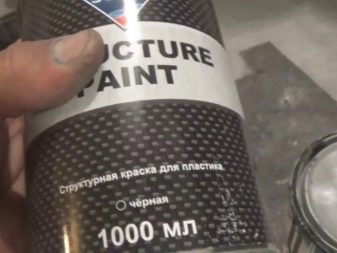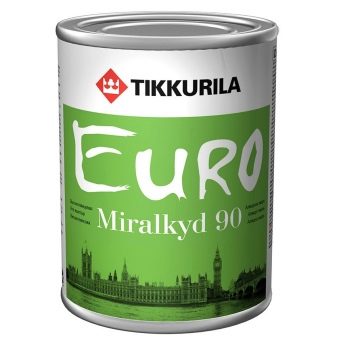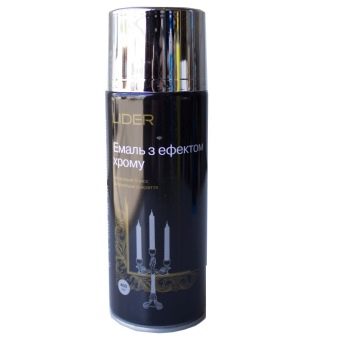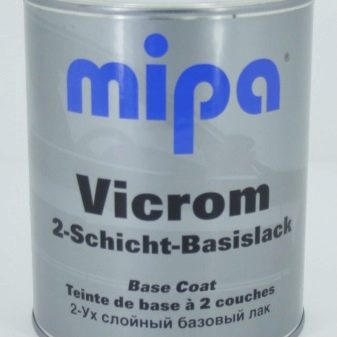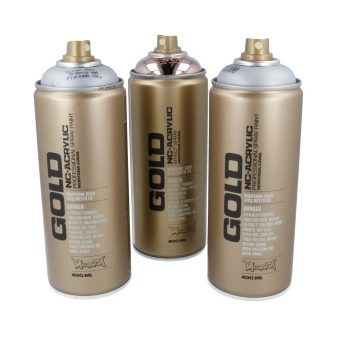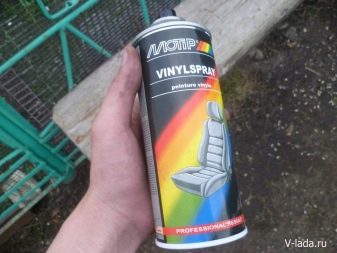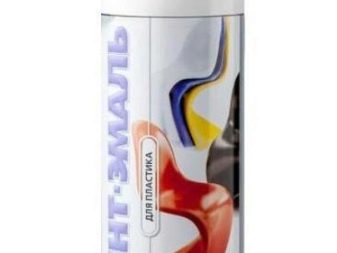How to choose paint for plastic in cans?
In your house there are probably quite a few decorative objects made of plastic. This modern and easy-to-use material has earned the recognition of the consumer and wide distribution in the field of repair and decoration. But often, with the active use of plastic parts, the paint layer can suffer greatly. The surface becomes turbid, the color fade, and the paint layer can peel off and crumble.
With the help of paint in a spray can easily update the affected parts with your own hands, or completely repaint a different color.
The nuances of paint selection in cans
First of all, you need to know what kind of plastic your parts are made of, since the further selection of dye properties and the technology of its application depend on the material itself.
- ABS (Acrylonitrile Butadiene Styrene) - made of it, cases of household and computer equipment, mobile phones and much more.
- PVC (Polyvinyl chloride) - window designs, floor coverings, children's toys and goods, some types of household containers.
These two types of plastics are distinguished by the fact that when painting them, primer coating is imperative. Its presence gives a high-quality adhesion of paint to the surface, which excludes subsequent detachments and cracks. If you do not have information about what kind of plastic you have in your hands, there is a simple method to check.
Fill a container with water where your plastic part will fit freely (except for large items). Dip the object in the water. If the plastic sinks, then primer is not required. You can apply the paint immediately to the surface. If your part stays afloat, you need to purchase a primer spray. Without it, the paint will not last long.
Pros and cons of spray enamel
Spray paints are easy to use. You do not need special skills, training, or additional expensive equipment.It is enough to follow simple recommendations from the manufacturer.
The advantages of enamel also include:
- Smooth, smooth surface. Modern balonchik heads are made in such a way as to simulate a paint spray gun torch. This allows you to achieve uniform spraying of enamel, so that an even, smooth surface layer is obtained.
- Drying speed. Spray paint dries very quickly, which is an undoubted convenience, because you do not have to spend a lot of time to work and speed up the drying of additional methods.
- Cost Efficiency. Balloon enamel is consumed slowly and one barrel is enough for a large surface.
- Convenience store. There is no need to create special conditions for the storage of unused residues, pour and carefully close, as in the case of canned paint. Enamel in the balloon is stored for a long time and securely.
- A large palette of colors and structures. This allows you to achieve great artistic expression and imitate many surfaces, for example, under the metal.
However, the surface of the coating using a spray is small.It is not possible to mix paints to obtain the desired shade. As a rule, there is a certain set of colors available for sale, so it’s not always possible to precisely match the wallpaper or window details.
Complex shades and in the right quantity can be ordered in color matching laboratories, but it will cost significantly more.
Cons of spray paint:
- If the aerosol is brought too close to the surface to be painted, smudges may form on the smooth plastic. To work with cans it is necessary to acquire skills and skill.
- Large spatter area. Elements for painting will have to either be dismantled or protected from splashing with the help of a film and a special, paper adhesive tape adjacent surfaces.
- Limited ink density. You can not adjust the degree of hiding or transparency of the paint, you have to work with the degree of thickness of enamel, which is provided by the manufacturer.
- Temperature conditions of work. Painting the exterior elements should be carried out in warm, windless, sunny weather. In the case of wind or precipitation, the result is unpredictable.
- Some paints may contain acetone and its derivatives. Be sure to review the composition and consult on this issue with the seller. Acetoacetic enamels can seriously damage plastic.
Types of paints for plastic
- Polymer Basically it is a high gloss paint that combines the properties of both paint and primer at the same time. In addition, this enamel does not require the application of a lacquer layer, it itself gives a high level of gloss on the surface. Polymeric paints are both permeable and waterproof.
- Polyurethane. This enamel on the basis of polyurethane resins has high wear resistance, durability and excellent gloss. The composition allows you to create a durable coating, which is not afraid of daily friction, small strokes and sharp objects. This paint involves the use of a primer material and is only suitable for application to bending parts, since the paint layer has a much higher strength than plastic. On objects of soft bending plastic, detachment is inevitable.
- Structural. This paint is composed of special particles that create a texture surface that resembles semolina with a different grain size.This property will successfully help to hide any plastic imperfections.
- SoftTouch. The paint allows you to create a pleasant velvety or velor surface. This kind of color, gives the product an expensive appearance and a pleasant to the touch texture.
Automotive paints and their features
For painting your own plastic, you can use specialized automotive paints and primers.
- Base under the lacquer. This type of enamel must be applied to a special primer on plastics, which will increase its adhesion to the surface of the part. At the end of the painted area must be coated with spray paint. Base enamel can be both simple colors and metallic and nacre effect, which allows you to transform interior objects.
The paint has a rich assortment of colors, including options "under gold" or "under silver", with different grain sizes - from very small to large, with bright sparkling flakes.
- Enamel with chrome effect. Allows you to create a surface similar in appearance to chrome. The effect of a well-polished mirror, impresses with its beauty and looks expensive, at the same time, it does not hit the budget.
- Paint with the effect of aluminum. Enamel has a fine and dense grinding of the dye, so that the effect of the reverse side of the aluminum foil is created on the surface. Mirror is absent, but there is a soft delicate glow.
Along with a base for lacquer, paints with various effects are made for gold, platinum, antique silver or copper. They have the finest grinding of the dye, which creates a reliable imitation of the precious metal.
- Vinyl paint. If you are a fan of interior decoration under the skin, then this paint is your option. Any plastic surface painted with vinyl enamel, externally and to the touch will be as similar to leather goods. The advantage of this paint is plasticity and an increased level of adhesion, which eliminates the primer. You can not be afraid of cracks and chips, it is excluded.
- High-temperature enamel. Of course, home furnishings can hardly be heated to temperatures that this enamel can withstand. But if you want to repaint or renew the surface of the electric kettle, vacuum cleaner,plastic parts of the coffee machine, which somehow heat up, then high-temperature paint will come to your aid.
Before painting the parts you need:
- clean the plastic surface with sandpaper with an abrasiveness of about 1500-200 grit;
- degrease the place of the intended application of enamel alcohol cleaner using a lint-free cloth;
- Before painting the main part, you should practice on an unnecessary piece of plastic: determine the pressure on the sprayer head and find the optimal distance from the cartridge to the surface.
On how to paint the plastic with a balloon, you will learn from the following video.
